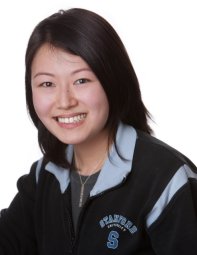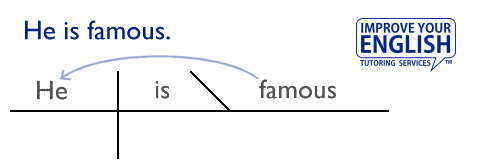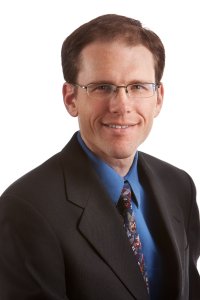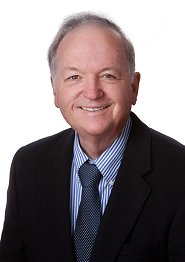 |
|
|
|
University of California,
Berkeley
Treasure of the Golden State |
Known to sportswriters and
fans throughout the United States simply as “California”
or “Cal,” UC Berkeley is better known to scientists and
researchers worldwide for its discovery of californium, berkelium,
and other transuranic elements in the periodic table.
Envisioned in the 1849 California constitution and founded in 1868,
Berkeley has deep roots in California history. The school of mining
is named for the Golden State’s most famous gold miner, George
Hearst. His wife, Phoebe Apperson Hearst, was the university’s
first millionaire patron. Starting in 1891, her dollars built several
of the oldest buildings on campus, including Girton Hall, designed
by Phoebe Hearst’s friend and protégé Julia Morgan
in 1911.
 More
recently, descendents of the pioneer Levi Strauss, who made a fortune
selling durable Levi’s jeans to the gold seekers of 1849, endowed
the Haas School of Business. Although UC Berkeley is famous as one
of the world’s best publicly supported universities, private
donors have supported continuing scholastic excellence during the
state’s most recent budget crisis. The Hewlett Foundation, for
example, pays the bills for 100 of Berkeley’s top professors
with its $113 million endowment. More
recently, descendents of the pioneer Levi Strauss, who made a fortune
selling durable Levi’s jeans to the gold seekers of 1849, endowed
the Haas School of Business. Although UC Berkeley is famous as one
of the world’s best publicly supported universities, private
donors have supported continuing scholastic excellence during the
state’s most recent budget crisis. The Hewlett Foundation, for
example, pays the bills for 100 of Berkeley’s top professors
with its $113 million endowment.
Private donors have helped in other ways. Andrew Wang, a former Improve
Your English student in his first year at Berkeley, praises the college’s
resources, especially the main stacks of the Doe Library, “which
stays open until 2 a.m. every day and 24/7 during finals.”
“As a pianist,” Wang adds, “I also take advantage of
the multiple private practice rooms in the music hall. Overall, Cal
is a great school, and I have enjoyed just about every single day—except
for the overpriced, mediocre food in the Dining Commons.”
Cal alumni have founded or cofounded many of Silicon Valley’s
largest companies, including Apple Computer and Intel, and indeed,
some of its smallest. Steve High, a product of Berkeley’s top-rated
English department, started Improve Your English Tutoring Services
in 2002. The company has sent several of its tutoring students to
Berkeley, including Julia High, class of 2010.
We are especially proud of helping nonnative speakers from local high
schools boost their essential English skills sufficiently to gain
admission.
Jessica Sreewilai, a native of Thailand who attended Lincoln High
in San Jose, is a member of the Berkeley class of 2014. Jay Lee, a
native of Korea, transferred to the Haas School of Business from De
Anza College. Chris Tandiono, another Mission High grad, came to the
United States from Indonesia as a small boy. He is on his way to becoming
a doctor.
In the eyes of many of its graduates, Berkeley is the greatest university
on the planet. Most objective observers also give the university high
grades. Although U.S. News & World Report rates 19 private
universities (such as nearby Stanford) higher than Cal, the same publication
paradoxically rates all of Berkeley’s individual departments
within the top 10. Students who received acceptance letters from multiple
universities this month should look closely at the departments in
which they intend to major.
As noted above, Berkeley’s English department is rated number
one. History, Chemistry, and Computer Science also landed on the top
of the news magazine’s list. Other rankings:
Math and Biology: #2
Internal Medicine, Physics and Engineering: #3
Earth Sciences: #4
Law: #6
Business and Education: #7
All college rankings are suspect, and most universities are much closer
in quality than the scores indicate. Although the U.S. News
rankings are the most famous, there are others. For example, the Washington
Journal ranks Berkeley number one in the United States and Shanghai
Jiao University calls Berkeley the third-best university in the world,
behind Harvard and Stanford.
Berkeley’s historical contributions to California and the world
are simply too numerous to list fully, from the development of the
atomic bomb to the creation of the UNIX operating system. For an astonishing
list of superlatives, go to Wikipedia’s entry
on UC Berkeley.
Admission letters go out this month. High school seniors, watch your
mailbox and cross your fingers.
Next
time: University of Southern California
Newsletter
Table of Contents |
More
Newsletters |
Back to
Improve Your English
|
|
|
Complement
vs. Compliment
 Teresa
Kim,
Teresa
Kim,
tutor
|
|
|
by
Teresa Kim
Many students don’t realize that two such words exist,
let alone that they have distinct definitions.
 As a verb, the
word compliment means “to give praise.” As a verb, the
word compliment means “to give praise.”
I complimented him for his hard work.
 The
verb complement means “to make a good combination
with someone or something else.” Think of the word complete. The
verb complement means “to make a good combination
with someone or something else.” Think of the word complete.
His personality complements hers nicely.
In other words,
the couple’s personalities may be dissimilar, yet they
fit together well: they complete one another.
 As
a noun, a compliment is “spoken praise.” As
a noun, a compliment is “spoken praise.”
Her compliment brightened my day.
 A
complement (noun) is “something that completes” A
complement (noun) is “something that completes”
something else.
You can buy the hat and shoes as complements.
In the early lessons
(3 and 6) of the diagramming workbook, we learn about two
kinds of Subject Complements: the Predicate Noun
and the Predicate Adjective. Together they are
called Subject Complements because they complete the
subject of the sentence, either by renaming it (Predicate
Nouns) or by describing it (Predicate Adjectives).
Predicate Nouns follow linking verbs and rename
the subject:

Predicate
Adjectives follow linking verbs and describe the subject:

On a side note,
what is the difference between complementary services
and complimentary ones?
If you go to the
car wash and ask for complementary services, you will
pay the additional costs for the service people to wax the
exterior, vacuum the interior, dress your tires, etc.
If you ask for
complimentary services, you won’t pay a dime, but you
may not get very much out of your request!
For
answers to specific writing questions, email us here.
Who knows? Your question may inspire our next article on The
Right Word.
Newsletter
Table of Contents |
More
Newsletters |
Back
to Improve Your English
|
|
|
|
Strunk and White’s Rule #2
by Steve High
The point of Rule
2—whether or not to use a comma after the last element
in a series—seems so minor that I almost blush to bring
it up.
To anyone except
an editor, the following distinction may seem picayune:
|
Strunk
& White say...
|
|
Hurray
for the red, white, and blue. |
|
The
Associated Press says...
|
|
Hurray
for the red, white and blue. |
Can you even see
the difference? Strunk & White uses a comma after white
and AP does not.
Someday you may
well be at least a part-time editor—of a school newspaper
or yearbook, of a PTA or church newsletter, or of a marketing
or technical publication.
In all these cases,
you will have to settle on a uniform practice to use throughout
your documents.
As with rule 1,
both The Elements of Style and The Associated Press
Stylebook are “right,” but they are not both
right at the same time. In other words, you cannot mix and
match. Using a comma in one instance and leaving it out in
another defeats the purpose of a style manual, which is to
give your work a professional appearance.
Want a chance to
quiz yourself on Strunk and White’s Rule No. 2? Go here.
For
answers to specific writing questions, email us here.
Who
knows? Your question may
inspire our next article on Writing
Tips.
Newsletter Table of Contents |
More
Newsletters | Back
to Improve Your English
|
|
|
|
Jack
London
 |
|
Nat
Crawford,
director of tutoring
|
|
by Nat
Crawford
Jack London is
one of California’s most famous writers and, in his greatest
works, also one of the state’s best. Although he grew up in
the Bay Area, he gained his fame for stories that describe
the perils of life in Northern Canada and Alaska. He writes
of people caught at the extremities of existence, where life
is difficult and dangerous, often destructive, yet also exhilarating.
London
became famous for writing stories in which people and animals
struggle to survive a cold, barren, and indifferent climate:
The
land itself was a desolation, lifeless, without movement,
so lone and cold that the spirit of it was not even that
of sadness. … It was the masterful and incommunicable
wisdom of eternity laughing at the futility of life and
the effort of life. (White Fang)
Some of his characters
persevere; others—those who lack will or imagination—die.
In “In
a Far Country,” two lazybones, manifestly unfit for
surviving an Alaskan winter, kill each other simply because
they prefer complaining about work to doing it. In “To
Build a Fire,” London depicts a foolish man who,
possessing only book-learned knowledge of the world, cannot
imagine the dangers of extremely cold weather:
It
did not lead him to meditate upon his frailty as a creature
of temperature, and upon man’s frailty in general, able
only to live within certain narrow limits of heat and cold;
and from there on it did not lead him to the conjectural
field of immortality and man’s place in the universe.
The ones who survive
this world do so but barely, and only after their spirits
have scoured their bodies for the last atom of strength, purpose,
or cunning. In “Love
of Life,” a man limps through the Canadian barrens
without food or friend. By the end, too weak to crawl more
than a mile in a day, he battles against the urge to lie back
and sleep for eternity:
He
steeled himself to keep above the suffocating languor that
lapped like a rising tide through all the wells of his being.
It was very like a sea, this deadly languor, that rose and
rose and drowned his consciousness bit by bit. Sometimes
he was all but submerged, swimming through oblivion with
a faltering stroke; and again, by some strange alchemy of
soul, he would find another shred of will and strike out
more strongly.
Here, London shows
his marvelous talent for depicting the consciousness of a
person at the breaking point.
London
is equally talented at depicting people. Consider the protagonist
of “All
Gold Canyon”: “Thinking was in him a visible
process. Ideas chased across his face like wind-flaws across
the surface of a lake.”
Or visualize one
of the two thieves in “Just
Meat” : “He was a slender, wizened man, nervous,
irritable, high-strung, and anaemic—a typical child of
the gutter, with unbeautiful twisted features, small-eyed,
with face and mouth perpetually and feverishly hungry, brutish
in a cat-like way, stamped to the core with degeneracy.”
Or deplore the
sorrowful condition of a 16-year-old boy worked to deformity
by factory labor: “He was a travesty of the human. It
was a twisted and stunted and nameless piece of life that
shambled like a sickly ape, arms loose-hanging, stoop-shouldered,
narrow-chested, grotesque and terrible.” London had vivid
memories of the hours he spent working in factories and traveling
with tramps, and these memories come to life on his pages.
Though adept at
portraying malcontents and criminals, London seems to take
particular pleasure in describing heroic triumph and exuberance.
In “Trust,”
a man drives himself without sleep for over two full days
just to return a backpack to a friend. At one point he paddles
and drags a canoe for miles into a 40-mile-per-hour wind;
at another point, he crawls around a pit full of dead and
dying horses, in the dark, without a flashlight, to recover
the pack. In The
Call of the Wild, London suggests that the imagination
of the artist and the exuberant energy of the wild animal
spring from the same source:
This ecstasy,
this forgetfulness of living, comes to the artist, caught
up and out of himself in a sheet of flame; … it came
to Buck, leading the pack, sounding the old wolf-cry, straining
after the food that was alive and that fled swiftly before
him through the moonlight. (The Call of the Wild)
In one of his finest
stories, London places an aging Australian boxer, Tom King,
on the the other side of this youthful exuberance. Here, Tom
contemplates his younger, stronger, and healthier opponent:
And
Tom King, looking, saw Youth incarnate, deep-chested, heavy-thewed,
with muscles that slipped and slid like live things under
the white satin skin. The whole body was a-crawl with life.
… He grinned with a certain wistful pathos in his own
ring-battered countenance, and went on cherishing his strength
with the jealousy of which only Age is capable.
In the match that
follows, London puts Tom King on the knife-edge between victory
and defeat. To see if Tom King wins that fight—whether
he ends up one of London’s triumphant heroes or one of
his defeated ones—you’ll need to read “A
Piece of Steak.”
Newsletter
Table of Contents |
More
Newsletters |
Back
to Improve Your English
|
|
|

 More
recently, descendents of the pioneer Levi Strauss, who made a fortune
selling durable Levi’s jeans to the gold seekers of 1849, endowed
the Haas School of Business. Although UC Berkeley is famous as one
of the world’s best publicly supported universities, private
donors have supported continuing scholastic excellence during the
state’s most recent budget crisis. The Hewlett Foundation, for
example, pays the bills for 100 of Berkeley’s top professors
with its $113 million endowment.
More
recently, descendents of the pioneer Levi Strauss, who made a fortune
selling durable Levi’s jeans to the gold seekers of 1849, endowed
the Haas School of Business. Although UC Berkeley is famous as one
of the world’s best publicly supported universities, private
donors have supported continuing scholastic excellence during the
state’s most recent budget crisis. The Hewlett Foundation, for
example, pays the bills for 100 of Berkeley’s top professors
with its $113 million endowment. Teresa
Kim,
Teresa
Kim,  As a verb, the
word compliment means “to give praise.”
As a verb, the
word compliment means “to give praise.”  The
verb complement means “to make a good combination
with someone or something else.” Think of the word complete.
The
verb complement means “to make a good combination
with someone or something else.” Think of the word complete.


